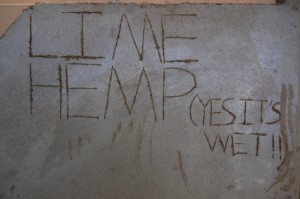 Concrete is a remarkably versatile building material which has been used by mankind to construct lasting structures for thousands of years: But with everything from the Pantheon in Rome to Three Gorges Dam in Sandouping being made from the stuff, the only downside to this high-in-demand product is its massive, often negative impact on the environment…
Concrete is a remarkably versatile building material which has been used by mankind to construct lasting structures for thousands of years: But with everything from the Pantheon in Rome to Three Gorges Dam in Sandouping being made from the stuff, the only downside to this high-in-demand product is its massive, often negative impact on the environment…
Are we living on a ‘concrete planet’?
- In terms of weight, the only substance on the globe which is more abundant than concrete is water.
- If one was to combine all of the aluminium, steel, plastic and wood in the world, concrete would still weigh twice as much as the sum total.
- Large concrete structures, like hydroelectric dams can use up as much as many millions of cubic metres of this ubiquitous building material.
What is concrete?
Put simply, concrete is a composite building material, meaning that it is comprised of numerous different ingredients: There are, however, many different recipes for making the substance, which itself has a huge variety of iterations, each with its own variety of specialist applications.
The Romans were the first to discover that by adding materials as diverse as volcanic ash, blood and horsehair to a concrete mix, the resulting produce would possess a unique set of properties.
Today, concrete is commonly reinforced by adding steel or other strong, high-tension materials, whilst an assortment of chemical additives are often used to affect the look and performance of the finished result in a number of ways.
Concrete: Here to stay?
Records show that the earliest evidence of concrete which survives today hails from ancient Greece, where the substance was used to create floors and small, robust items.
The first culture to use concrete on a grand scale, however, were the Romans, whose mastery of this hard-wearing material allowed them to complete ambitious architectural and engineering projects, such as The Pantheon, Pont Du Gard and The Baths of Caracalla.
After the fall of the Roman Empire, however, it would be many hundreds of years until concrete would be so widely used again, but use it people did – and before long, we have arrived at the situation we are in today, where concrete dominates virtually every built-up area on earth.
Hempcrete: a valid alternative to concrete?
Whilst we know all too well about the remarkable properties of the Cannabis Sativa Plant and its myriad uses, did you know that right now, it is possible to use hemp-derived materials to construct entire buildings from?
‘Hempcrete’ is a blanket-term for a number of modern sustainable concrete-alternatives which use hemp as their core ingredient.
The substance is manufactured by mixing lime with hemp fibres, in order to produce strong, dense, yet supple blocks which can be used for both construction and insulation purposes: In some of its iterations, Hempcrete is known to be remarkably durable, with estimates stating that walls comprised of the material could potentially last for many hundreds of years!
Are there any note-worthy examples of Hempcrete structures?
Whilst no one is expecting Hemp-Crete to fully replace the less environmentally friendly forms of concrete currently on the market (for a start, it is nowhere nearly as strong) – There have been some examples in recent years of sustainable buildings made from the stuff, including:
- Chateau Maris – Languedoc, France: An extensive, sustainable structure which exploits the amazing properties of hemp to produce a cutting edge winery which requires zero ventilation, heating or cooling, regulates moisture effectively and gives off no pollutants: In fact, the whole remarkable place is fully carbon neutral.
- The Hemp House – North Carolina USA: This home is constructed primarily from a specific Hempcrete product known as ‘Hemcrete’, with a number of other sustainable substances being used to create interior structures within the building;

